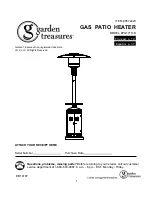
www.graf.info
16
/
36
5.
Installation and assembly
5.3
Insertion and filling
The tanks must be inserted, impact-free, into
the prepared trench using suitable equip-
ment. To avoid deformities, the tank is filled
1/3 with water before filling in the tank sur-
rounding.
Afterwards the surrounding (roundgrain
gravel, max. grain size 8/16) is then filled in
layers of max. 30 cm steps and is compact-
ed.
The individual layers as well as the medi-
al
support
column
must
be
well-
compacted (manuel tamper).
Damage to
the tank must be avoided during compaction.
Mechanical compaction machines must not
be used under any circumstances. The sur-
rounding towards the trench must be at least
100 mm wide.
5.4
Laying connections
All connections should be fitted to the flat
surfaces on the tank dome to ensure that
the maximum water level in the tank is be-
low the tank dome/telescope connection.
The required holes can be produced with a
circular cutter or hole saw. When doing this,
please note that the maximum hole size is
DN 110 (laterally bottom) or 160 DN (tank
dome).
All inlet and overflow pipes must be laid with
an incline of at least 1% in the direction of
flow (remember that subsequent settling
may occur). All intake, pressure and control
lines must be routed in an empty pipe, which must be laid at an angle to the tank, as straight as possible
without any sagging. Any bends that are needed should be produced using 30° adapters.
Important:
The empty pipe must be connected to an opening above the max. water level.
Please note:
In order to fit the connections, please always use materials which are suitable for drinking
water (PE screw connections, special seals, connection pipes and connection fittings).
maximum
water level
















































